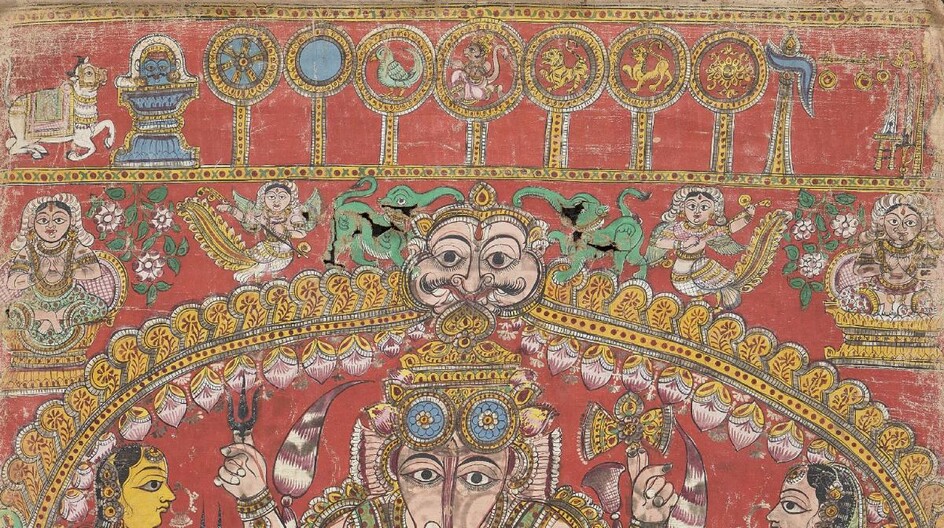A scroll depicting Markandeya and Bhavana Rishi Purana performed before the Padma Sale, Padmasali caste, Eastern India, Andhra Pradesh,Telangana, late 19th-early 20th century, approx. 600 cm long This scroll originates from Andhra Pradesh where...
A scroll depicting Markandeya and Bhavana Rishi Purana performed before the Padma Sale, Padmasali caste, Eastern India, Andhra Pradesh,Telangana, late 19th-early 20th century, approx. 600 cm long This scroll originates from Andhra Pradesh where such scrolls were used to relate stories of a particular caste. Scrolls such as this were employed by hereditary itinerant performers or storytellers locally called Patamuvaru, to perform before people of their community. Telanganga scrolls differ from scrolls of other regions in India in that their focus is depicting the legends of the origins of their particular caste rather than depicting episodes from Hindu mythology for education and entertainment. The performance of such scrolls was a complex event for the intended audience. Storytellers would visit a community every 2-3 years and the narrative performances would last a number of evenings and traditionally commence with the worship of Ganesh whose prominent image is shown at the beginning of most scrolls, as is the case with the present one. For further reading see J. Mittal, Deccani Scroll Paintings in the Jadgdish and Kamla Mittal Museum of Indian Art, Hyderabad, 2014.
[ translate ]View it on
Sale price
Estimate
Reserve
Time, Location
Auction House
A scroll depicting Markandeya and Bhavana Rishi Purana performed before the Padma Sale, Padmasali caste, Eastern India, Andhra Pradesh,Telangana, late 19th-early 20th century, approx. 600 cm long This scroll originates from Andhra Pradesh where such scrolls were used to relate stories of a particular caste. Scrolls such as this were employed by hereditary itinerant performers or storytellers locally called Patamuvaru, to perform before people of their community. Telanganga scrolls differ from scrolls of other regions in India in that their focus is depicting the legends of the origins of their particular caste rather than depicting episodes from Hindu mythology for education and entertainment. The performance of such scrolls was a complex event for the intended audience. Storytellers would visit a community every 2-3 years and the narrative performances would last a number of evenings and traditionally commence with the worship of Ganesh whose prominent image is shown at the beginning of most scrolls, as is the case with the present one. For further reading see J. Mittal, Deccani Scroll Paintings in the Jadgdish and Kamla Mittal Museum of Indian Art, Hyderabad, 2014.
[ translate ]


